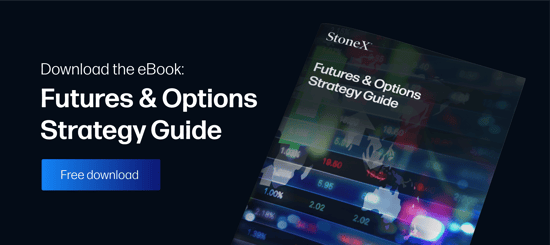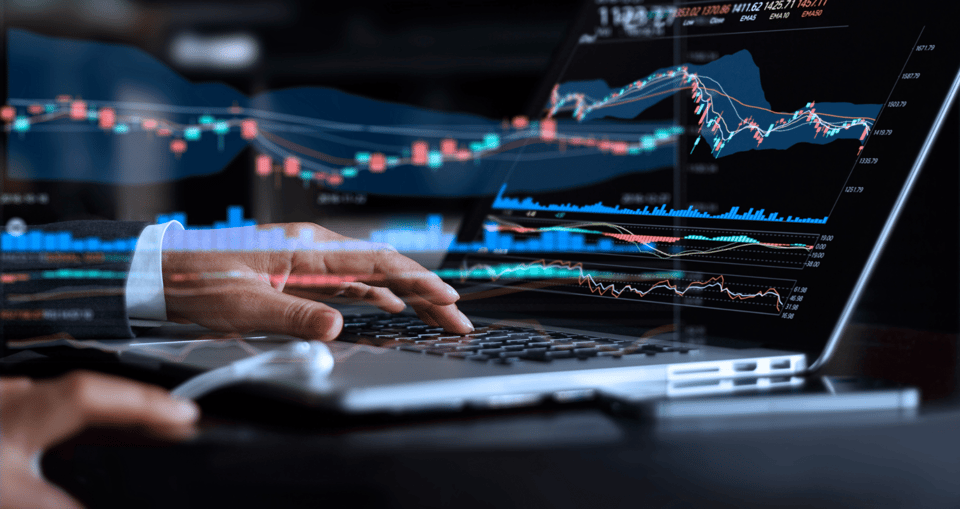Perhaps the most important question a trader will face is “How much risk do I assume on the next trade?” A fundamental driver of risk is position size, or the amount of a given security accumulated during the execution of a trade. Position size has several definitions, depending upon whether the financial instrument being traded is an equity, debt, derivative or currency product.
How Position Size Impacts Risk
In futures trading, position size refers to the quantity of contracts being bought or sold. As the number of contracts involved in a specific trade increases, so does the degree of financial leverage. Higher degrees of leverage boost margin requirements as well as the assumed risk of the entire transaction.
As an illustration of the relationship between position size and leverage, let’s say a trader likes the probability of an intraday rally in U.S. equities. In an attempt to capitalize upon a possible breakout, the following scenario unfolds:
Any trades are educational examples only. They do not include commissions and fees.
- Market entry: The trader buys 1 contract of the E-mini S&P 500 (ES) at a predetermined price
- Position Size: Long, 1 contract
- Margin requirements: Intraday, US$500
- Exposure: The assumed capital risk is US$12.50 per tick
Shortly after opening the position, a release of positive economic data interjects optimism into the market. As a result, the trader decides to increase position size:
- Market entry: The trader buys another contract of the E-mini S&P 500 (ES) at the initial, predetermined price
- Position Size: Long, 2 contracts
- Margin Requirements: Intraday, US$1000
- Exposure: The assumed capital risk is US$25.00 per tick
Because the position size grew from being long 1 ES to 2 ES, the margin requirements and capital exposure per tick effectively doubled. Although actively trading a larger number of contracts may produce greater returns, it also involves the assumption of much larger risks.
Calculating Optimal Position Size
Futures markets can exhibit chaotic behavior. If a trader fails to address trade management and leverage before entering the market, errors attributable to subjectivity are likely to occur.
Three elements of futures trading are crucial in quantifying an optimal position size:
- Account size: The amount of risk capital available to the trader is a critical determinant of position sizing. Brokerage-specified, instrument-specific margin requirements must be met in order to take an active position in the market. In the event that they are not, open positions are liquidated, and market entry is prohibited.
- Risk tolerance: Often referred to as the “pain threshold,” risk tolerance refers to the portion of the trading account available to be lost on an individual trade. Commonly accepted tolerance levels range from 1 percent to 3 percent of the trading account balance.
- Stop loss: A stop loss is the market price in which a trade’s failure is confirmed, and profit is no longer a foreseen outcome. Stop losses are developed using many different philosophies, but in futures trading, they are most commonly quantified by a predetermined number of ticks.
By calculating the portion of the trading account to be risked and how expensive the trade in question will be, you can derive your optimal position size:
Maximum Capital Risk ÷ Specific Trade Risk = Optimal Position Size
Use the following procedure to determine the optimal position size for a trade of WTI Crude Oil (valued at US$10 per tick), assuming a US$10,000 account, 3 percent risk tolerance, and 15-tick stop loss:
Any trades are educational examples only. They do not include commissions and fees.
- Calculate the maximum capital risk (account size × risk tolerance):
US$10,000 × 0.03 = US$300
- Calculate the specific trade’s risk (stop loss in ticks × tick value):
15 × US$10 per tick = US$150
- Derive the optimal position size (maximum capital ÷ trade risk):
US$300 ÷ US$150 = 2 contracts
According to these calculations, the proper position size for the crude oil trader is 2 contracts. Putting on a trade with more than 2 contracts is an excessive use of leverage. Likewise, a trade with fewer than 2 contracts means that the potential gains are insufficient.
Summary
Remember that position sizing is 100 percent controllable. Although the futures markets are often unstable in nature, the implementation of leverage need not be. Trading with appropriate levels of assumed risk is an integral part of avoiding catastrophic loss and achieving longevity within the marketplace.



